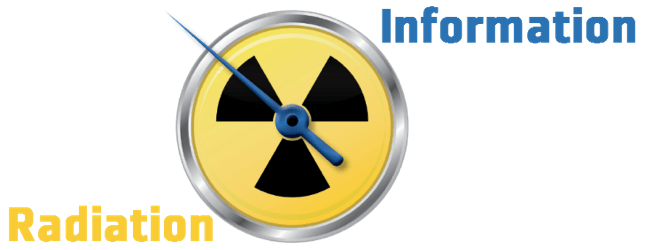
Ionizing Radiation and Cancer
Ionizing radiation can change the structure of molecules, including the DNA in cells. Some of this damage can be so severe that the body is unable to repair itself and cancerous cell can develop.
Most of the information we have today on the effects of radiation on the human body comes from research conducted on survivors of the Hiroshima and Nagasaki atomic bombs released in Japan in World War II. Over 60% of these survivors were exposed to less that 100 mSv of radiation and thus, less than 100 mSv has been considered as a low dose, not for low dose CT, but for low dose radiation exposure in general. Scientists have also ben able to gather radiation exposure data from nuclear power plant workers and patients exposed to radiation for medical purposes. Combining these data gives scientists the best estimates for radiation exposure and cancer risk.
Cancer Risk of 100 mSv Exposure
It is estimated that if 100 people were to receive a 100 mSv dose of radiation then 1 of the 100 would develop cancer. This is compared to the estimate that 42 in 100 people will develop cancer regardless of radiation exposure. Exposure to less radiation is estimated to cause fewer cancers in that only 1 out of 1000 people exposed to 10 mSv of radiation would develop cancer.
ALARA Principle of Medical Imaging
The concern over radiation exposure from medical imaging has led to the principle of As Low As Reasonably Acceptable (ALARA). This means that we should reduce the level of radiation used in medical imaging to as low as possible but still high enough to obtain accurate images needed to diagnose and treat patients.
Radiation Exposure and Cancer Risk Philosophies
Unfortunately, there is still a lot to learn about the effects of the low dose radiation, such as used with medical imaging and CT scans.
Linear No Threshold (LNT) Philosophy
Current beliefs follow what is called a Linear No Threshold (LNT) philosophy. What this means is that the risk of developing cancer from radiation increases over time as your exposure to radiation increases. This means that each low dose exposure to radiation adds upon the next and increases your risk of developing cancer. This means that there is no “Safe Dose” of radiation and radiation exposure should be kept as low as possible.
Linear Threshold (LT) Philosophy
A Linear Threshold (LT) philosophy believes that low dose radiation offers no harm and one’s risk of developing cancer only increases once the dose gets large enough, for example a 100 mSv dose.
Hormesis Philosophy
Hormesis theory believes that low levels of radiation exposure are actually beneficial and one’s risk of developing cancer only increases once the dose gets large enough.



